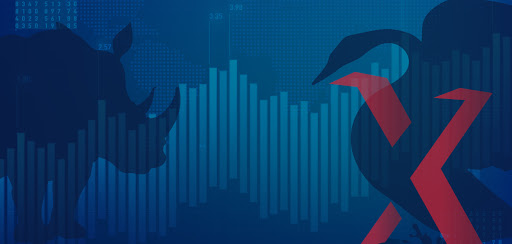In the last week, the European Central Bank came forward and made a forthright statement that it expects to increase its bond purchases “significantly” next quarter, after borrowing costs rose in the region. Will this nudge the Fed into something similar? Well looks unlikely given the recent narrative from the Fed.
There has been a coordinated rise in bond yields globally and the Fed might just have to do or at least say more than their recent stance of being skeptical of a sustained rise in inflation and brushing it off as transitory and more because of the base-effect. One thing is for sure we will know much more about the Fed’s medium-term stance in the coming Wednesday than we do now!
Here are the key things to watch out:
The most important data point to watch will be the Central Bank’s expectations for interest rates in 2022 and 2023 (the infamous “dot plot”). At the December Fed forecast update just one of 17 Fed officials expected an interest rate rise in 2022, with five expecting a rate hike by the end of 2023. Consequently, the median expectation is for the first rate rise in 2024.If several more policymakers indicate an expected rate hike as soon as next year, or if the median member starts to expect a hike in 2023, it will show the Fed members may not be as united and sanguine on price pressures as they have appeared to date.

Economic projections come a close second in the hierarchy with respect to things the market will scrutinize. Given the just-passed fiscal stimulus bill and rapid progress of vaccinations in the country, the Fed’s December forecasts for a 4.2% economic growth and 5.0% unemployment rate at the end of the year look overly pessimistic; they are likely to be revised higher, though it will be interesting to see if those revisions also “pull forward” previously expected economic improvements from 2022 and 2023.In simple words, 2021 is expected to be significantly better than projected in December but 2022 and 2023 may see only minor revisions. If we do end up seeing a decent bump-up in 2022 and 2023 GDP, and unemployment numbers, the Fed may have a tough time maintaining the ‘dovish’ tone.
Lastly, the press conference should highlight more insights into what the Fed members feel about the outlook going forward. Powell is likely to be grilled on the definition of “substantial progress” toward the central bank’s employment and price stability goals in an attempt to glean insights into when bond purchases could cease, and interest rates could rise. Fed would want to remain in “lower for longer” / “wait and see” mode for this meeting, with any evidence of rising inflation characterized as transitory for now. Expect more ‘fireworks’ in the June meeting by when the Fed would have more data points to give a confident commentary on the economic conditions.





